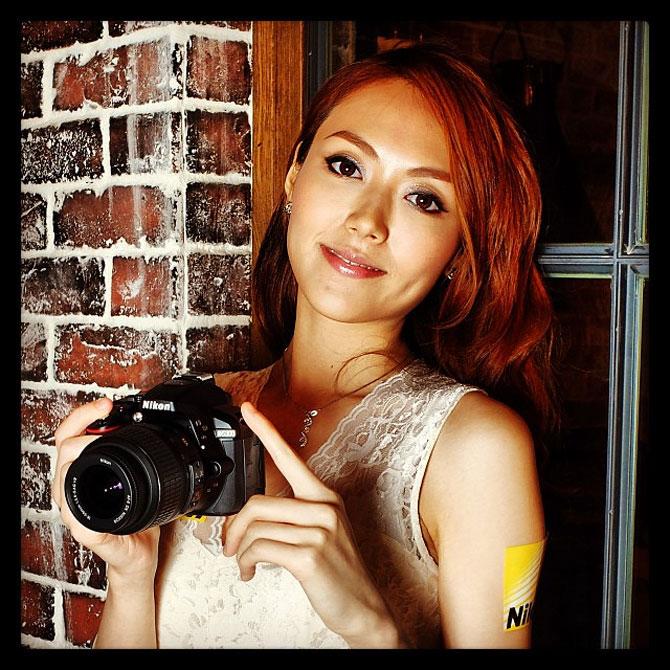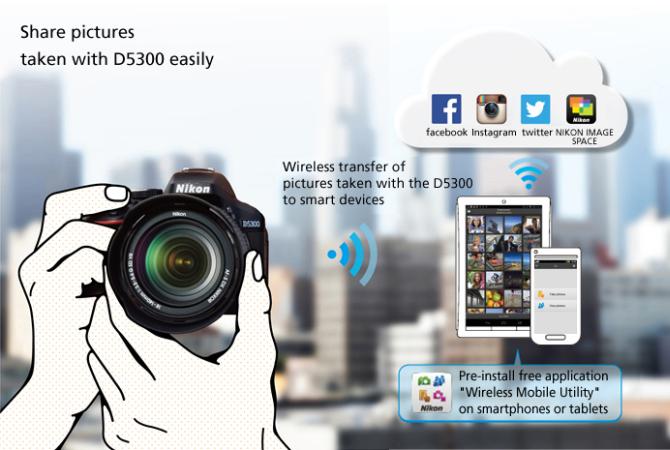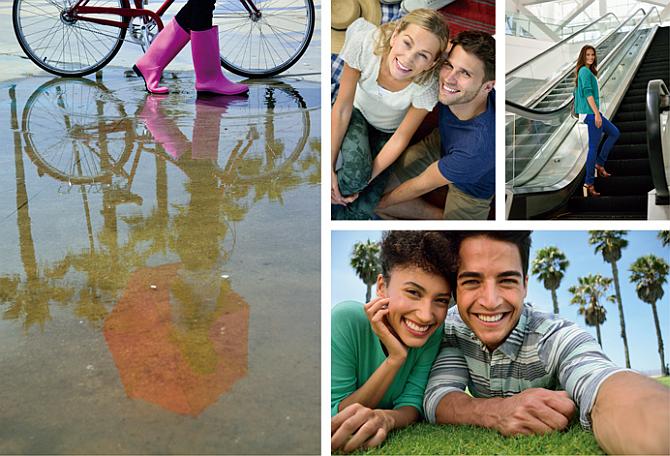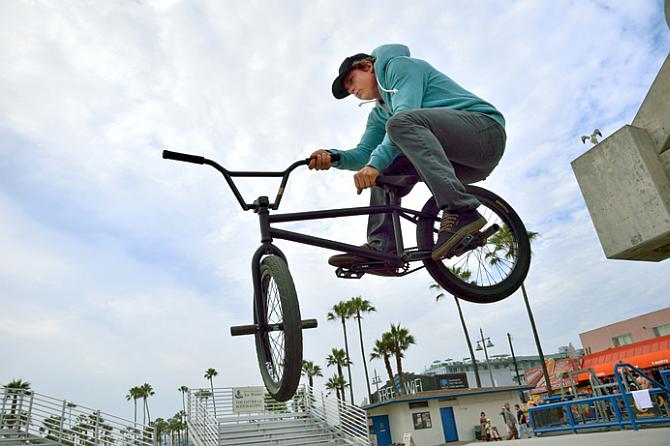 | « Back to article | Print this article |
Nikon D5300: Should you buy it for Rs 60k?
If you need an all-purpose camera which delivers strong image quality and battery life, and allows you to share your pictures with the world, then you should consider the Nikon D5300.
Nikon is one of the leading manufacturers, if not the leading manufacturer, of DSLR cameras. This is despite competition from Canon, Olympus and Sony. Given the times when one manufacturer is promising a new device that can one-up the competition, it only makes sense for Nikon to do the same. Thus we have the D5300.
Unlike other manufacturers who promise to revolutionise the way we take pictures, with the Canon EOS 70D bringing a new auto-focus or Sony bringing out mirrorless cameras, the Nikon D5300’s big claim to fame is being the first device in the company’s history to feature Wi-Fi and GPS.
It may not seem like the biggest deal -- especially since smartphone cameras have had this area covered for more than a year now -- but it does bring a whole new dimension to picture-taking, especially when you factor in that the D5300 is more advanced than your typical point-and-shoot replacement.
What does the D5300 bring forth in terms of features, image quality and specifications? Are they, along with the new connectivity feature, enough to justify an upgrade over the D5200?
Nikon D5300: Should you buy it for Rs 60k?
Design
If you’ve become familiar with using a Canon DSLR, then there’s no reason to fear as the D5300 does not attempt to reinvent the wheel. You have the familiar dial which allows you to toggle between different settings, the “I” button which helps display information about a shot and much more.
It handles the same as well, with the screen coming off as slightly bigger than normal and with a more spacious rubber grip for one’s thumbs. The newest button additions come by way of the GPS and Wi-Fi keys, which we’ll look at later.
Otherwise, this is the same design as the D5200. The display can be articulated to allow for more difficult shots, and it comes off as still fairly compact and easy to handle for a DSLR.
The materials and construction are a bit different, with Nikon opting for an almost unibody-like feel to the D5300. It allows for the device to feel tougher given the uniform monocoque construction while still weighing reasonable at 480 grams. It’s not going to be used for underwater photography any time soon, but the D5300 can take more than its share of knocks.
Reader Invite
Are you a gadget/gaming wizard/afficianado? Would you like to write on gadgets, gaming, the Internet, software technologies, OSs and the works for us? Send us a sample of your writing to gadgetsandgaming@rediffmail.com with the subject as 'I'm a tech wizard/afficianado' and we will get in touch with you.
Nikon D5300: Should you buy it for Rs 60k?
Interface
For those used to the D5200, you won’t find much different about the navigation or features here. Nikon took it upon itself to introduce some new shooting modes, with HDR Painting and Toy Camera, thus making for 9 Effect modes and 16 scene modes.
You can still adjust the ISO, white balance and such to your liking with minimal fuss. An interesting option here is the Automatic White Balance mode which, thanks to the lack of an optical low-pass filter, is supposed to capture more detail.
Other options include Retouch Mode, which lets you modify a portrait image to enhance the skin tones and brighten its appearance.
It would have been enough if Nikon had just implemented simple Wi-Fi and GPS support. However, the D5300 attempts to go further and at least implement some form of sharing. This can be seen with the Wireless Mobile Utility app which lets you transfer images using the Wi-Fi to your iOS or Android device.
You can also use the app and your smartphone to take pictures remotely, thus allowing for fairly more difficult shots or easier self-portraits.
The GPS system lets you tag longitude, latitude and other geometric parameters to your shooting location. On its own, it’d be normal but using the ViewNX 2 software, you can create detailed maps which can then be shared online.
If nothing else, Nikon is at least implementing some sensible new features to go with the D5300, even if they’re not overtly complex.
Reader Invite
Are you a gadget/gaming wizard/afficianado? Would you like to write on gadgets, gaming, the Internet, software technologies, OSs and the works for us? Send us a sample of your writing to gadgetsandgaming@rediffmail.com with the subject as 'I'm a tech wizard/afficianado' and we will get in touch with you.
Nikon D5300: Should you buy it for Rs 60k?
Specs and image quality
The Nikon D5300 features a powerful 24.2 megapixel, DX-format CMOS sensor with an EXPEED 4 image-processing engine. As stated before, it doesn’t have an optical low-pass filter.
It has an effective ISO range of 100 to 12800, with 25600 also on offer, features a 39 point, 9 cross-type autofocus system and is capable of a minimum shutter speed of 1/4000th of a second with a maximum shutter speed of 30 seconds.
A 3.2-inch LCD display is present for the viewfinder, with a single SDXC slot present for storage. The D5300 is capable of full HD recording at up to 60 frames per second. Thanks to the addition of Wi-Fi and GPS, the battery life has been sufficiently expanded to allow for up to 700 shots on a single charge.
While the D5300 fairs well in autofocus, delivering fast performance along with the image processor, there are some slight issues here and there.
Shooting at ISO 3200 or higher delivers a healthy amount of detail but higher settings do tend to introduce a bit of artifacting on magnification. It’s nothing as serious as the D5200 and you most likely won’t notice it.
Automatic white balance is a definite improvement over the D5200, and basic shooting, whether still images of videos, delivers sharp details. The Live View contrast detection can be a bit slow compared other devices, but not enough to be a nuisance.
Reader Invite
Are you a gadget/gaming wizard/afficianado? Would you like to write on gadgets, gaming, the Internet, software technologies, OSs and the works for us? Send us a sample of your writing to gadgetsandgaming@rediffmail.com with the subject as 'I'm a tech wizard/afficianado' and we will get in touch with you.
Nikon D5300: Should you buy it for Rs 60k?
Verdict
Does the Nikon D5300 come recommended, with the absence of an optical low-pass filter, higher ISO range and connectivity features compared to its predecessor? It retails for Rs 75,950 with an 18-140 mm VR lens, Rs 59,950 with an 18-55 mm VR lens and at Rs 54,450 for the body alone.
If you already own a D5200, these additions might not make it entirely worthwhile for dropping so much cash on a brand new device. However, if you need an all-purpose camera which delivers strong image quality and battery life, and allows you to share your pictures with the world, then you should consider the Nikon D5300.
Reader Invite
Are you a gadget/gaming wizard/afficianado? Would you like to write on gadgets, gaming, the Internet, software technologies, OSs and the works for us? Send us a sample of your writing to gadgetsandgaming@rediffmail.com with the subject as 'I'm a tech wizard/afficianado' and we will get in touch with you.





